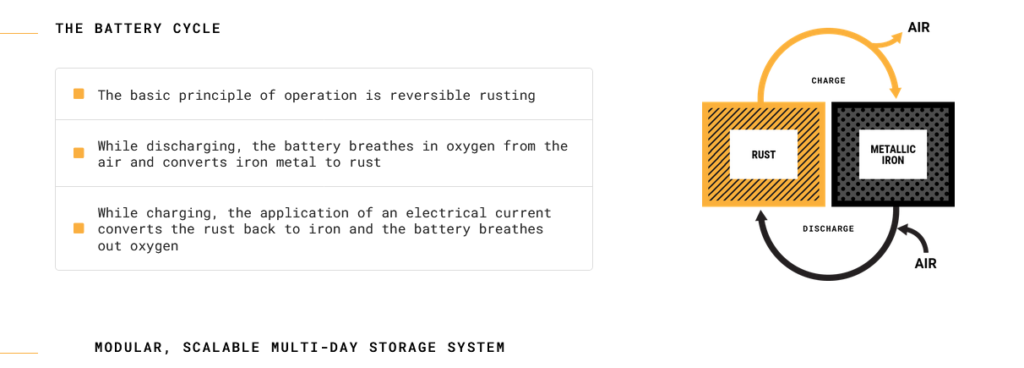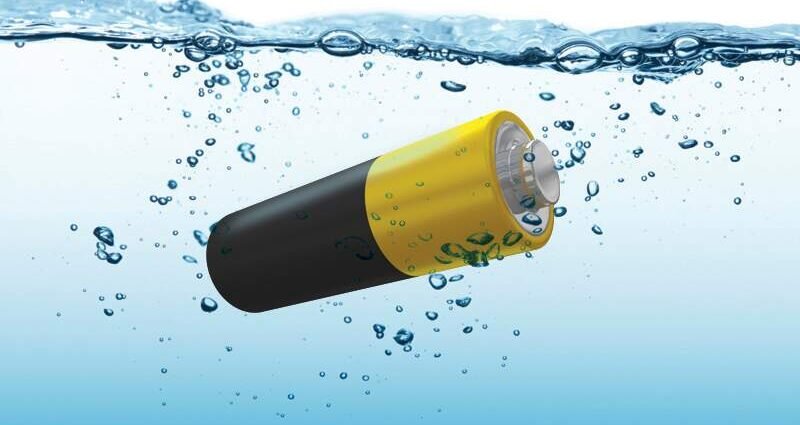Lithium-ion technology has been continuously improved over many years to efficiently store a high amount of energy in a compact and lightweight device while providing strong power output.
Typically, lithium-based batteries use organic solvents mixed with salts to transfer charge. Although it is possible to use water as a solvent, it is not commonly done due to the high voltage in lithium-ion batteries, which can cause the water to split into hydrogen and oxygen.

When it comes to large-scale storage systems on the grid, the main focus is on reducing the cost of batteries rather than maximizing their energy capacity. Batteries for grid storage don’t require quick charging and discharging, and their size and weight are not as important.
This suggests that it may be possible to utilize heavier materials such as iron and zinc in batteries. Additionally, using water with salts as an electrolyte could lead to cost savings, easier manufacturing, and improved safety. Water-based batteries are unlikely to catch fire, even under extreme conditions.
Certain companies are embracing the advantages of utilizing water in their alternative batteries as they move closer to making them available for commercial use.

Form Energy is a prominent company that develops alternative batteries for the grid, often referred to as “rust batteries” due to their use of iron and water, which undergo reactions similar to the process of metal rusting when exposed to moisture.
Form’s website touts its batteries’ safety, saying the systems have “no risk of thermal runaway.” The company broke ground on a factory in West Virginia earlier this year. Eos Energy is also building batteries with a water-based electrolyte, using zinc as a primary cathode ingredient.

Alternative batteries face numerous obstacles, such as the challenge of being cost-competitive with lithium-ion batteries that have been in the market for a long time and have become significantly cheaper. However, having more battery options could be advantageous, as it could provide reliable and secure systems that address safety concerns associated with large battery installations.
Reference- MIT Technology Review Story, Inside EVs, Interesting Engineering, New Horizon, BBC






